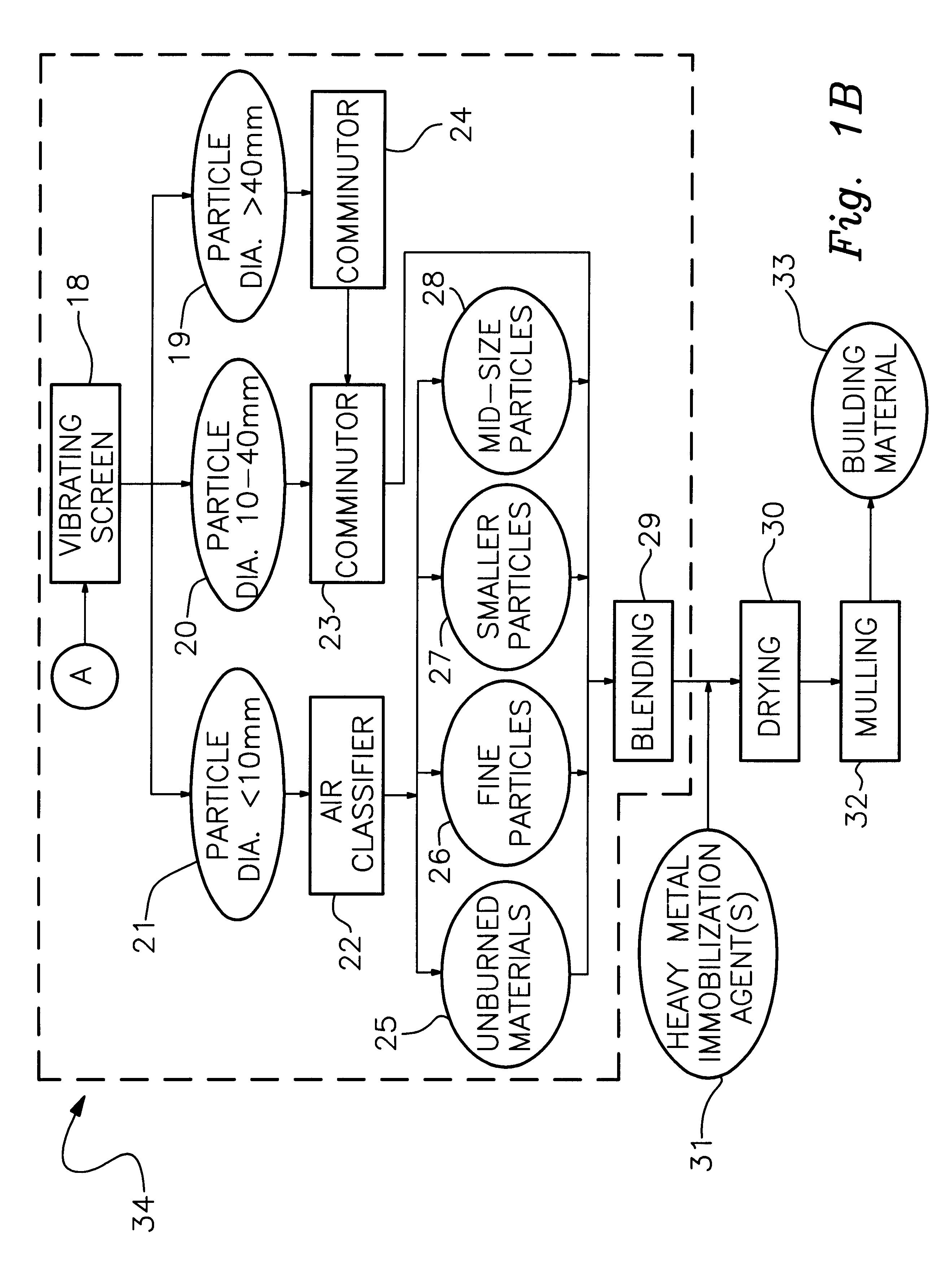Construction material and method
a construction material and construction technology, applied in the field of construction materials, can solve the problems of increasing disposal difficulty, reducing landfill disposal of combustor ash, and requiring enormous energy
- Summary
- Abstract
- Description
- Claims
- Application Information
AI Technical Summary
Problems solved by technology
Method used
Image
Examples
embodiment 1
A truck received municipal waste combustor (MWC) ash from an MWC facility with a stoker-type plant having a processing capacity of 600 tons / day. The MWC ash contained 37% moisture, so it was left outdoors for two weeks and drained and dried, and the moisture became 20% in weight.
The drained and dried MWC ash was directed to a 60 mm screen to remove larger debris, then directed to a magnetic separator to remove ferrous materials. After removing larger debris and ferrous materials, the particles of MWC ash were then sorted by a vibrating screen into particles with particle diameters of less than 10 mm, 10 to 40 mm, and more than 40 mm.
Particles with a particle diameter of less than 10 mm were then directed again to a air classifier to remove unburned materials, and were sorted into fine particles, smaller particles and medium-sized particles. Also, the particles with a particle diameter of 10 to 40 mm were comminuted and sorted by a vibrating screen into particles with particle diamet...
embodiment 2
The fine particles, smaller particles, and medium-sized particles obtained in Embodiment 1 were blended with the maximum particle diameter being 10 mm, and blended material having a U-coefficient of 800 and ignition loss of 6.1% in weight was obtained. This blended material was dried. Orthophosphoric acid of 1% in weight and ferrous sulfate of 0.01% in weight were added to the blended material so dried, and mulled, and roadbase material was obtained.
The revised CBR of this roadbase material when measured in accordance with JIS A 1211 was 78%, which exceeded the revised CBR of 20% required for sub-base roadbase material.
embodiment 3
The fine particles, smaller particles, medium-sized particles, particles with diameters of 10 to 15 mm and particles with diameters of 15 to 25 mm obtained in Embodiment 1 were blended with the maximum particle diameter being 25 mm, and blended material having a U-coefficient of 300 and ignition loss of 6.79% in weight was obtained. This blended material was dried. Orthophosphoric acid of 1% in weight and ferrous sulfate of 0.01% in weight were added to the blended material so dried, and mulled, and roadbase material was obtained.
In accordance with JIS A 1211, the revised CBR of this roadbase material when measured was 108%, which exceeded the revised CBR required for sub-base roadbase material by more than 80%
PUM
| Property | Measurement | Unit |
|---|---|---|
| diameter | aaaaa | aaaaa |
| size | aaaaa | aaaaa |
| particle size distribution | aaaaa | aaaaa |
Abstract
Description
Claims
Application Information
 Login to View More
Login to View More - R&D
- Intellectual Property
- Life Sciences
- Materials
- Tech Scout
- Unparalleled Data Quality
- Higher Quality Content
- 60% Fewer Hallucinations
Browse by: Latest US Patents, China's latest patents, Technical Efficacy Thesaurus, Application Domain, Technology Topic, Popular Technical Reports.
© 2025 PatSnap. All rights reserved.Legal|Privacy policy|Modern Slavery Act Transparency Statement|Sitemap|About US| Contact US: help@patsnap.com



